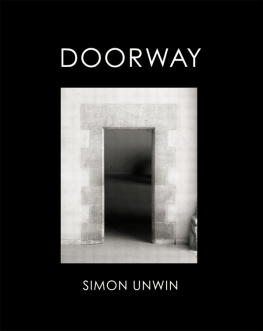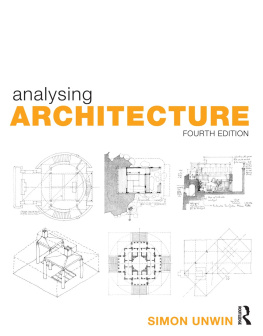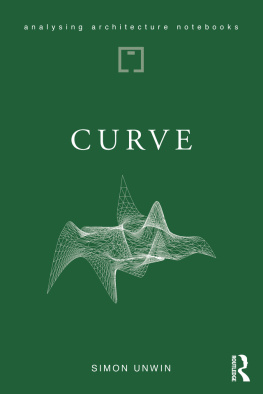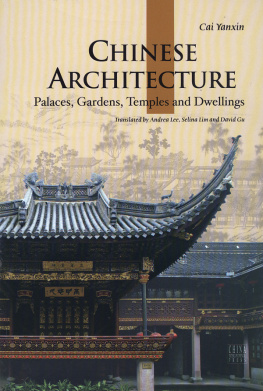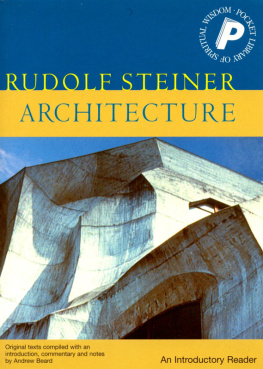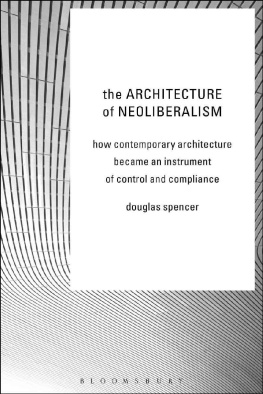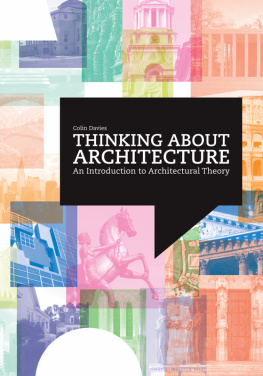
ANALYSING ARCHITECTURE NOTEBOOKS
Architecture is such a rich and subtle field of human creativity that it is impossible to encapsulate it completely in a single book. I tried to describe some of the basics in an earlier book, Analysing Architecture, which has now appeared in four editions, increasing in size each time. But even though that book has almost doubled in content, there is more to cover. So, rather than make the original even heavier, I have decided to add further chapters as a series of separate smaller volumes.
These Analysing Architecture Notebooks are the new chapters I would have added to Analysing Architecture had not excessive size become a concern. The series format also allows me to explore topics at greater length than if I were confined to just a few extra pages in the original book. Nevertheless, the shared aim remains the same: to explore and expose the workings of architecture in ways that might help those who face the challenges of doing it.
Simon Unwin is Emeritus Professor of Architecture at the University of Dundee in Scotland. Although retired, he continues to teach at the Welsh School of Architecture in Cardiff University, Wales, where he taught for many years. His books are used in schools of architecture around the world and have been translated into various languages.
Books by Simon Unwin
Analysing Architecture
An Architecture Notebook: Wall
Doorway
Exercises in Architecture Learning to Think as an Architect
Twenty-Five Buildings Every Architect Should Understand
The Ten Most Influential Buildings in History: Architectures Archetypes
ebooks (available from Apple Books)
Skara Brae
The Entrance Notebook
Villa Le Lac
The Time Notebook
The Analysing Architecture Notebook Series
Metaphor
Curve
Children as Place-Makers
Shadow
Simon Unwins website is atsimonunwin.com
Some of Simon Unwins personal notebooks, used in researching and preparing this and his other books, are available for free download from his website.
Part of a review of Children as Place-Makers:
Through brief one-page meditations, accompanied by Unwins winsome drawings, on commonplace childhood activities like sand castle building and play forts built of tree branches, he gradually demonstrates how elemental place-making evolves into adult architectural designs. Given the rigorous professional training architects need to attain in order to practice, Unwins focus might seem like a discounting of the technical skills architects as adults need to master. But in no way do I find his approach anti-intellectual or counter-professional. He is insisting on the root-impulse that drives one to become an architect in the first place, a primal impulse that can all too easily become forgotten during the rigours of academic training and daily professional practice. This book is really a primer about architectural imagination that begins intuitively, unselfconsciously in childhood. That was perhaps what Picasso had in mind when he remarked: It takes a very long time to become young. Unwins extraordinary book may reduce the time needed to design with the freshness reflecting a childs vision of place.
Norman Weinstein Who Isnt a Born Architect?, ArchNewsNow.com, 2019, available at: archnewsnow.com/features/Feature585.htm (September 2019).
First published 2020
by Routledge
2 Park Square, Milton Park, Abingdon, Oxon OX14 4RN
and by Routledge
52 Vanderbilt Avenue, New York, NY 10017
Routledge is an imprint of the Taylor & Francis Group, an informa business
2020 Simon Unwin
The right of Simon Unwin to be identified as author of this work has been asserted by him in accordance with sections 77 and 78 of the Copyright, Designs and Patents Act 1988.
All rights reserved. No part of this book may be reprinted or reproduced or utilised in any form or by any electronic, mechanical, or other means, now known or hereafter invented, including photocopying and recording, or in any information storage or retrieval system, without permission in writing from the publishers.
Trademark notice: Product or corporate names may be trademarks or registered trademarks, and are used only for identification and explanation without intent to infringe.
Publishers Note
This book has been prepared from camera-ready copy provided by the author.
British Library Cataloguing-in-Publication Data
A catalogue record for this book is available from the British Library
Library of Congress Cataloging-in-Publication Data
Names: Unwin, Simon, 1952- author.
Title: Shadow : the architectural power of withholding light/ Simon Unwin.
Description: Abingdon, Oxon ; New York : Routledge, 2020. | Series:
Analysing architecture notebooks | Includes bibliographical references and index.
Identifiers: LCCN 2019056494 (print) | LCCN 2019056495 (ebook) | ISBN 9780367442569 (hardback) | ISBN 9780367442583 (paperback) | ISBN 9781003008583 (ebook)
Subjects: LCSH: Architecture--Composition, proportion, etc. | Shades and shadows in architecture.
Classification: LCC NA2760 .U59 2020 (print) | LCC NA2760 (ebook) | DDC 720--dc23
LC record available at https://lccn.loc.gov/2019056494
LC ebook record available at https://lccn.loc.gov/2019056495
ISBN: 978-0-367-44256-9 (hbk)
ISBN: 978-0-367-44258-3 (pbk)
ISBN: 978-1-003-00858-3 (ebk)
Typeset in Arial and Georgia
by Simon Unwin
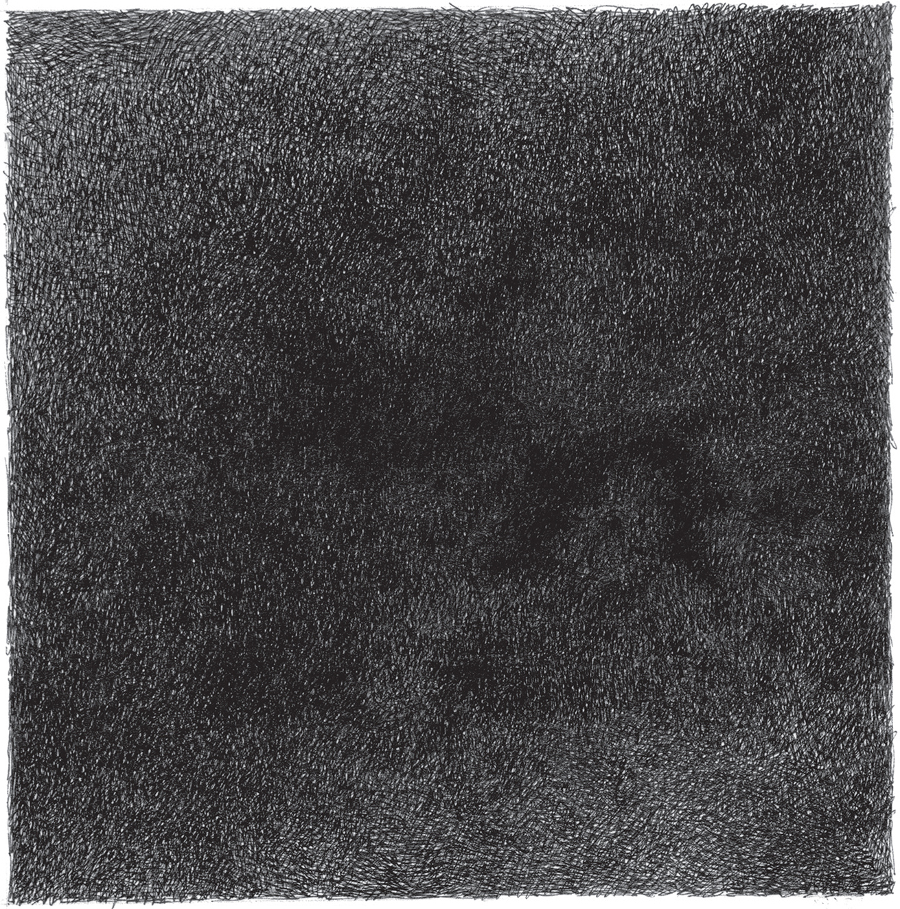
With apologies to Robert Fludd Et sic in infinitum, in Utriusque cosmi maioris scilicet et minoris metaphysica, physica atqve technica historia, 1617. See: archive.org/details/utriusquecosmima01flud/page/n33 (November 2019).
Light is the expeller of darkness. Shadow is the suppression of light.
Leonardo da Vinci (15th century CE), trans. MacCurdy, 1939.
The truth is, Darkness will be found in every part of Space, where there is no Light. Should it be asked, What becomes of Darkness, when Light enters into it? We reply, that Darkness doth not make its escape. Darkness appears to be an unlimited negative.
Joseph Unwin Materialism Refuted, 1829.

Larchitecture est le jeu savant, correct et magnifique des volumes assembls sous la lumire. Nos yeux sont faits pour voir les formes sous la lumire; les ombres et les clairs rvlent les formes.
(Architecture is the masterly, correct and magnificent play of mass brought together in light. Our eyes are made to see forms in light; light and shade reveal these forms.)
Le Corbusier Vers Une Architecture, 1923 (trans. Etchells Towards a New Architecture, 1927.)
Only There is shadow under this red rock, (Come in under the shadow of this red rock), And I will show you something different from either Your shadow at morning striding behind you Or your shadow at evening rising to meet you
T.S. Eliot The Waste Land, 1922.
As we came in the door an elderly waitress was kneeling by a candle behind which stood a large screen. On the far side of the screen, at the edge of the little circle of light, the darkness seemed to fall from the ceiling, lofty, intense, monolithic, the fragile light of the candle unable to pierce its thickness, turned back as from a black wall.
Next page

